Lessons in Literacy // Engaging in Journalism: Middle Schoolers Conduct Research in the Sonora Desert
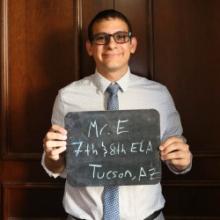
For this installment of the Lessons in Literacy series, the CLE is pleased to spotlight an incredible educator, Cesar Elvir. Mr. Elvir teaches middle school English Language Arts at Santa Cruz Catholic School in Tucson, Arizona. He is originally from San Pedro Sula, Honduras, and he graduated from Purdue University. Mr. Elvir is serving his second year as an ACE Teaching Fellow. He is a candidate for a Master’s in Education from the University of Notre Dame.
Recently, as my seventh and eighth graders were working in my classroom at Santa Cruz Catholic School in Tucson, I listened as they gleefully laughed and made fun of people who fell for a YouTuber’s prank. Apparently, this young star duped several viewers when he claimed he had a “secret hack” to add headphone jacks to iPhone 7 models by drilling a hole into them. As tech-savvy 11- to 14-year-olds, my seventh and eighth-grade students are no strangers to misleading information, but it became clear to me that they weren’t exactly aware of how serious misinformation could be.
In response, we learned about The Red Scare and the role propaganda and misinformation played in creating an environment of fear and paranoia against perceived communists and communist allies. More recently, we’ve discussed the anti-vaccination movement and how a large number of misinformed individuals are causing previously controlled diseases to return.
Still, I felt that my students needed a thorough sense of their own responsibilities as young media consumers and media creators. During our unit on informative and research-based writing, our students learned to apply secondary research in investigative reports to enhance our credibility and the quality of information for readers. We also used primary research to provide the value of a firsthand account to those same readers. Throughout the unit (and beyond), students are continually asked to find quality research and use it to convince, persuade, or engage their audience and establish their reliability as authors.
For the students’ performance assessment, a summative task assigned at the end of our informative and research writing unit, I took them on a field trip to Tucson’s Arizona-Sonora Desert Museum. Through this assignment, my middle schoolers were able to determine source reliability, observe and record research, and publish their findings. Ultimately, this experience allowed my students to be better digital citizens; they were able to acknowledge their responsibilities to their audience in providing truthful information.
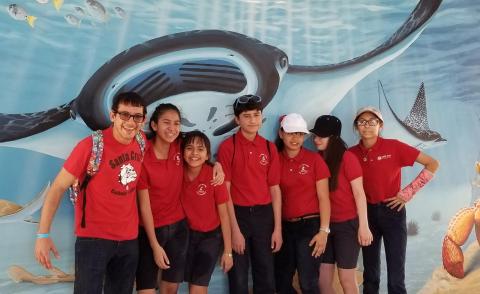
Below, I share the prep work my students did before embarking on our field trip and the details of the field trip and performance assessment. I also provide the theory that informed my planning. I hope that you find my students’ work meaningful for your own classroom practice.
Arizona Common Core Standards:
Grade(s): 7-8
Activity highlights:
Before initiating the final performance assessment, students learn to address “fake news,” or misinformation, by applying skills involving source triangulation and source credibility evaluation. They also become skillful at using research to convince and persuade an audience and in adapting MLA citation standards as they conduct secondary and, later, primary research.
1. The first step in the project involves conducting primary research, where students learn to create inferences through visual observations. Students first create inferences in our classroom by observing specific details, like the classroom organization, set-up, and cleanliness. Students compose a short report based on their findings. We then practice the same activity in our larger school environment, where students create short reports on the state of our school using the observations they collected.
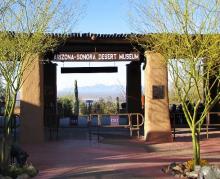
2. Next, the seventh and eighth-grade classes take a field trip to Tucson’s Arizona-Sonora Desert Museum, where, equipped with notepads and writing utensils (along with healthy amounts of water and sunblock), students are tasked with jotting down as many observations and inferences as they can while they tour the various locations and exhibits. Students are also tasked with differentiating between their own observations (primary sources) and information gathered from tour guides or informative plaques (secondary sources). guides or informative plaques (secondary sources).
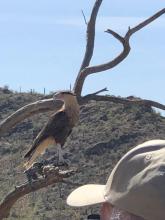
Chaperones and students are also encouraged to take photos as visual evidence to incorporate in their papers. Students and parents upload their images on a shared Google drive folder to guarantee access for all students.
3. Upon our return and using their Chromebooks, students apply the secondary and primary research gathered during the trip to compose a journalist report on the Arizona-Sonora Desert Museum, with the specific goal of using said research to persuade or dissuade their audience to make a visit. Students are also encouraged to incorporate visual design (added as an additional lesson during the writing component), in their reports through the use of images and color design.
4. Ultimately, students submit their work via Google Classroom for grading. I assess their work using a rubric and verify whether or not their report successfully convinced or dissuaded their audience to visit the museum through the quality of their collected secondary and primary research.
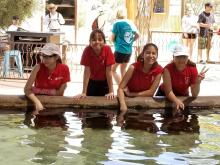
Overall, my students loved the experience, which was clear in their introductory and concluding remarks:
- “Visiting the Sonoran Desert Museum was an amazing experience. It had beautiful views overall and amazing animals.”
- “In the end we all had fun and will never forget this experience.”
- “I highly recommend going there…You can have fun and learn at the same time.”
- “I will always will remember this experience and know that the desert I live in, is more than it seems!”
- “...You should go to the desert museum too, because it is LIT.”
The theories behind the activity:
The journalist report project is designed with discovery learning in mind, which itself is a result of Jean Piaget’s theory of cognitive development. The goals of the assignment are to:
- present the students with a difficult question or problem to solve (i.e. should someone visit the museum?),
- teach students how to gather valid information through research, and
- challenge the students to creatively solve the problem based on the observations and inferences they made during their research.
Though parts of the assignment require guidance on my part, students have to take charge of their learning as they explore the museum and choose what data to record and assess. Then, they must figure out the best way to present their data in a compelling manner to their audience. In doing so, my seventh and eighth graders assume responsibility for the concepts and knowledge covered, and are therefore more likely to remember and apply them.

Additionally, digital media literacy and digital citizenship both influenced the activity itself and the lessons leading up to it. We live in a time where everyone is bombarded with information, misleading or not, and it’s becoming increasingly difficult to separate verifiable, trustworthy information from that which seeks to trick, shock, and/or confuse. Who are more susceptible to this than tech-savvy middle schoolers? These young people may readily fall victim to misinformation in the media they so often peruse. Through the assignment, students learn about the responsibilities of being media consumers and media creators. They are able to identify different types of sources (primary vs. secondary) and evaluate source reliability. Finally, in publishing their work, the students acknowledge their duty to their audience in providing truthful information.
As a teacher during the 21st century, I believe it is my responsibility to aid and challenge my students in consuming and creating media responsibly, not only for their own benefit, but for the world at large. In giving our students the opportunity to conduct quality research in their own community and publish their findings, we can teach our students how to better separate fact from fiction and, ultimately, how to become better citizens of an increasingly global society.
Happy Reading,
Cesar

